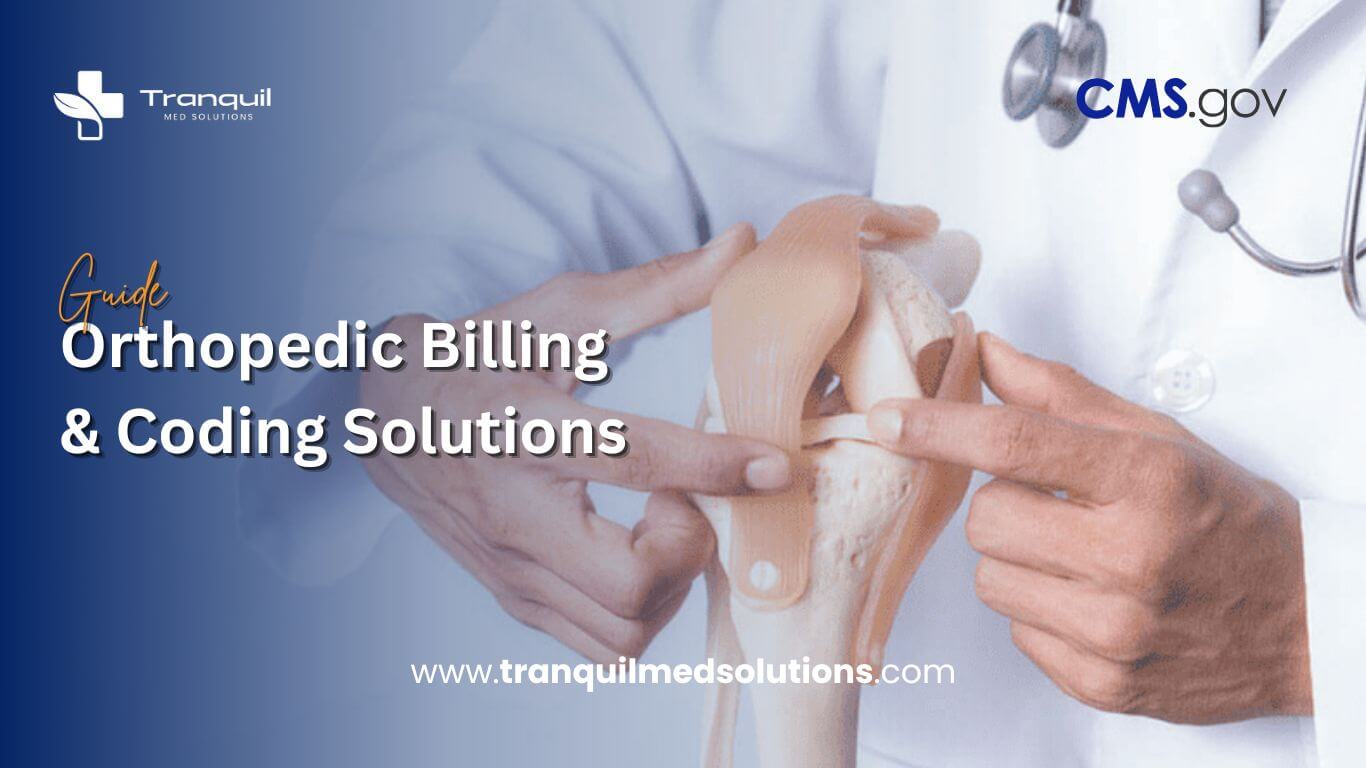Are you facing challenges in managing your orthopedic practice’s billing and coding needs? Delayed claims, denials, or revenue leaks can disrupt your financial flow and patient care. Orthopedic billing, with its intricacies and regulatory requirements, demands precision, expertise, and a strategic approach.
Outsourcing your billing to specialists can save time, improve compliance, and enhance your revenue cycle performance.
Here’s how professional orthopedic billing services can transform your operations and why they are vital for your practice’s success.
The Complexities of Orthopedic Billing
Orthopedic medicine focuses on the musculoskeletal system—bones, joints, ligaments, tendons, and muscles. It involves intricate procedures like joint replacements, trauma surgeries, and sports medicine treatments, all of which require accurate and detailed coding.
Errors in documentation, patient eligibility verification, or incorrect modifier usage can lead to claim rejections and revenue loss.
Did You Know?
- 35% of orthopedic surgery claims contain errors.
- 25% of these claims are rejected, significantly impacting cash flow and practice operations.
Key Services Offered in Orthopedic Billing
| Service | Description | Key Benefit |
|---|---|---|
| Patient Demographics and Eligibility Verification | Ensures accurate patient data and eligibility, minimizing claim rejections upfront. | Reduces claim rejections by verifying patient information early. |
| Accurate Coding and Documentation | Certified coders proficient in ICD-10, CPT, and HCPCS codes ensure compliance and correct charge capture. | Prevents errors and ensures proper reimbursement. |
| Claims Submission and Follow-Up | Timely submissions and persistent payer follow-ups reduce accounts receivable days. | Speeds up cash flow and payment processing. |
| Denial Management and Resolution | Experts analyze and address denied claims to recover revenue effectively. | Maximizes revenue recovery. |
| Reporting and Analytics | Detailed performance reports identify revenue opportunities and improve processes. | Provides insights to enhance billing outcomes. |
Orthopedic Procedure CPT Codes
Correct CPT coding is essential for accurate billing and reimbursement. Below is a concise guide to commonly used orthopedic procedure codes:
| Procedure | CPT Code |
|---|---|
| Knee Arthroscopy | 29877 |
| Joint Aspiration/Injections | 20600–20611 |
| Total Hip Arthroplasty | 27130 |
| Total Knee Arthroplasty | 27447 |
| Closed Fracture Treatment | 28515 |
| Open Fracture Treatment | 11010–11012 |
| Rotator Cuff Repair | 23410 |
| ACL Repair | 29888 |
| Carpal Tunnel Release | 64721 |
| Spinal Fusion | 22554 |
Precise documentation and a deep understanding of CPT guidelines are critical to ensure compliance and optimized reimbursement.
Orthopedic Billing Modifiers
Modifiers provide additional details about procedures, ensuring accurate coding and reimbursement. Proper use of modifiers reduces claim denials and supports efficient billing.
| Modifier | Description |
|---|---|
| LT (Left Side) | Indicates a procedure performed on the left side of the body. |
| RT (Right Side) | Indicates a procedure performed on the right side of the body. |
| 50 (Bilateral Procedure) | Specifies a procedure performed on both sides of the body. |
| 51 (Multiple Procedures) | Denotes multiple procedures performed during the same session. |
| 52 (Reduced Services) | Indicates a partially reduced or eliminated procedure. |
| 76 (Repeat Procedure) | Refers to a repeated procedure performed by the same physician. |
Using modifiers correctly ensures compliance, reduces errors, and streamlines reimbursements.
What’s New in Orthopedic Billing for 2024?
New CPT Codes for Vertebral Body Tethering (VBT)
- 22836: Anterior thoracic vertebral body tethering (up to 7 segments).
- 22837: Anterior thoracic vertebral body tethering (8+ segments).
- 0790T: Revision or removal of thoracolumbar tethering.
Revised Codes for Bunion Correction
- 28292: Correction of hallux valgus with (bunionectomy), including sesamoidectomy.
New Category III Code for Percutaneous Injection
- 0814T: Injection of calcium-based osteoconductive material into the proximal femur, unilateral.
Why Orthopedic Billing Services Are Essential
- Enhanced Accuracy and Compliance: Certified professionals adhere to CMS guidelines, minimizing errors.
- Increased Revenue: Practices see a 30% average increase in collections.
- Faster Turnaround: Claims with a 98% first-pass acceptance rate are processed quickly.
- Cost Savings: Outsourcing eliminates in-house billing costs.
- Focus on Patient Care: Freeing staff from administrative tasks improves patient outcomes.
Best Practices for Orthopedic Billing
- Audit Regularly: Identify and correct errors through frequent audits.
- Stay Updated: Keep up with coding guideline changes.
- Leverage Technology: Use advanced billing systems to improve efficiency.
- Educate Staff: Train teams on documentation standards to ensure accuracy.
Partner with Tranquil MedSolutions
Investing in professional billing services is a strategy for growth. It enhances financial health, improves compliance, and supports better patient care.
Outsourcing your orthopedic billing to Tranquil MedSolutions ensures accurate claims processing and maximized revenue. Our experts specialize in various orthopedic fields, including sports medicine, trauma surgery, and pediatric orthopedics.
Contact us today at 1-(518) 413-1817 to streamline your billing process and improve your practice’s profitability.
Frequently Asked Questions
What CPT codes are used for orthopedic procedures?
For new patient visits, use 99201–99205. For established patients, use 99211–99215. Code selection depends on medical history, diagnosis, and exam time.
What is Modifier 25 in orthopedic billing?
Modifier 25 signifies a separate, significant evaluation and management (E/M) service performed on the same day as another procedure.




